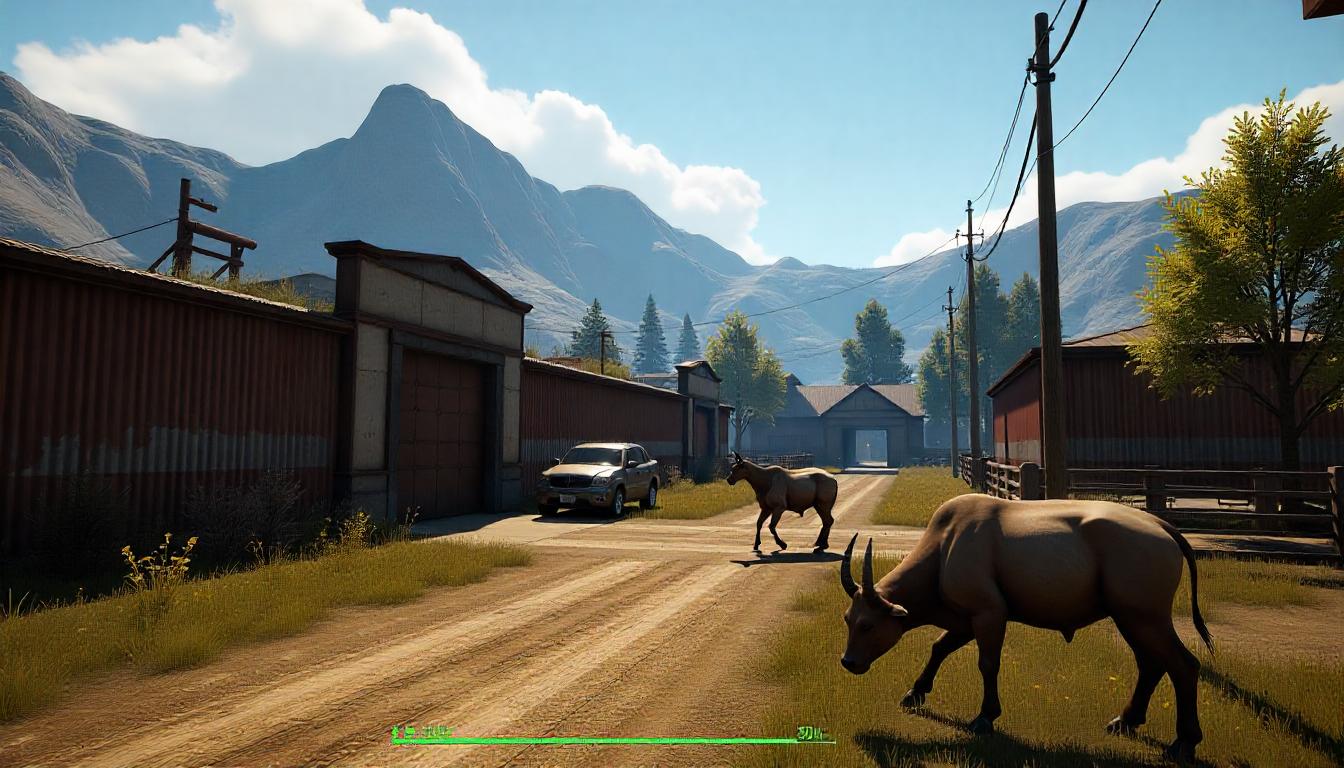Fallout 4 gives players the unique opportunity to craft sprawling, post-apocalyptic settlements, but creating a truly functional and aesthetically pleasing settlement requires more than simply slapping down a few walls and resources. It demands thoughtful design, an understanding of resource efficiency, and creative techniques to ensure both beauty and utility. In this architect-inspired guide, we’ll break down some of the best layout strategies, resource-saving tips, and advanced tricks to help you design settlements that both look great and work like well-oiled machines. Whether you’re building a humble outpost or a vast metropolis, these principles will elevate your design game.
Understanding the Foundations: Planning and Layout
Before you start placing any structures, it’s crucial to take a step back and assess the area you’re working with. Fallout 4’s settlement locations range from lush forests to ruined cityscapes, each with their own challenges and opportunities. Much like in real-world architecture, the land you build on should inform your decisions, guiding the overall layout and functional zones within the settlement.
1. Assess Your Terrain
The first principle of any settlement design is terrain analysis. Are you building on flat, open land, or are there natural obstacles like rocks and debris? Identifying these features will help you make smart choices about where to place important structures. Elevation can also be a key factor. Higher ground can give you a tactical advantage in defense and provide an aesthetically pleasing view for settlers.
Tip: If the terrain is uneven, use building foundations to level areas and create a more stable platform for construction. This prevents awkwardly positioned structures and offers smoother navigation for settlers.
2. Zoning for Functionality
Urban planners use zoning to separate residential, commercial, and industrial areas, and this principle is equally applicable in Fallout 4. By organizing your settlement into functional zones, you can ensure that everything flows efficiently and that resources are allocated wisely.
Residential Areas: Focus on comfort and protection for your settlers. Place homes in quieter, secure areas, ideally near resources like food and water. Elevate these structures where possible to improve their aesthetics and provide a sense of order.
Industrial Areas: These zones should be placed near critical resources like scrap piles, power sources, and workshops. By clustering them together, you make it easier to access and monitor production. Just keep these areas a bit away from residential zones to avoid pollution and noise disrupting settlers.
Common Areas: Design spaces where settlers can gather and engage in activities. These might include marketplaces, dining halls, or open courtyards. Make these areas vibrant by incorporating different aesthetic elements, such as trees, benches, or decorative lighting.
3. Flow and Connectivity
One of the most overlooked aspects of settlement design is pedestrian flow. You want to ensure that settlers can move through the settlement smoothly and that important areas are connected with ease. Think about the layout like an urban planner would: main thoroughfares should be wide enough for settlers to traverse comfortably, while secondary paths should allow for less direct, but still efficient movement.
A good tip is to create pathways that lead to key facilities, such as water pumps, power sources, and storage areas. This minimizes the distance settlers need to travel while maintaining a clear, cohesive design.
Tip: Use bridges, stairs, and ramps for smooth transitions between levels. These elements don’t just look good; they also reduce the risk of your settlers getting stuck in the environment.
Resource Efficiency: Building Smarter, Not Harder
In Fallout 4, every piece of scrap, component, and material matters. Maximizing resource efficiency can make the difference between a thriving settlement and a struggling one. Here are some advanced strategies to help you use materials wisely.
1. Minimize Resource Waste
When designing your settlement, always think about material efficiency. For example, when building walls, use materials like wood or metal, which are readily available in the world around you. Avoid using rare components unless absolutely necessary, as they can be better utilized elsewhere.
Tip: Create a resource storage system. Group your materials by type (scrap, components, etc.) so you can easily access what you need without wasting time looking for specific items. This also helps you avoid hoarding unnecessary components.
2. Harness the Power of Automation
Fallout 4 offers a variety of automated systems that can help save time and effort. Water purifiers, for instance, are vital to the health of your settlers, but building them in isolated locations can drain resources quickly. Instead, use solar panels to power water purifiers or rely on wind turbines for energy production. By coupling renewable power sources with efficient water systems, you’re optimizing both utility and sustainability.
Tip: You can set up automatic supply lines between settlements to keep resources flowing where needed. This means you don’t have to manually carry scrap, food, or water between locations, which can save you significant time.
3. Vertical Construction for Space Efficiency
If your settlement space is limited, go vertical. Building upwards is one of the most efficient ways to maximize usable space, especially in tight or cluttered areas. Instead of sprawling outwards, stack multiple floors of houses, stores, and workshops. This reduces the amount of land taken up while still offering ample space for your settlers to live and work.
Tip: Use ladders, stairs, and elevators to ensure your settlers can access upper levels. Elevation also helps create more sophisticated sightlines and adds to the settlement’s aesthetic appeal.
Aesthetic Design: Creating a Unique, Engaging Settlement
While functionality is key, aesthetics should never be an afterthought. A well-designed settlement isn’t just a place to live; it’s a space that inspires pride and adds immersion to the game world. Here are some tips for creating a visually stunning environment that will make your settlement stand out.
1. Use Symmetry and Balance
Just like in traditional architecture, symmetry plays a significant role in creating pleasing, balanced designs. Symmetrical layouts and structures tend to be more satisfying to the eye and create a sense of order within the chaos of the wasteland.
For example, you can mirror the placement of buildings, walls, and pathways on both sides of the settlement. This helps create a structured, orderly environment that feels intentional rather than haphazard.
2. Embrace Natural Elements
Post-apocalyptic environments often feel bleak, but introducing natural elements can add warmth and life to your settlement. Plant trees, flowers, and shrubs to create greenery in otherwise desolate spaces. These simple touches can have a profound impact on the overall aesthetic, bringing a touch of beauty and tranquility to the harsh world.
Tip: Use lighting to create ambiance. Whether it’s through lamps, hanging lights, or lanterns, proper lighting can transform the atmosphere of your settlement at night, making it feel cozier and more inviting.
3. Incorporate Salvaged Materials
In a world filled with wreckage, using salvaged materials in creative ways can enhance both the narrative and the aesthetics of your settlement. Turn old metal sheets into stylish fences, repurpose scrap wood for sturdy furniture, or use broken glass for unique windows. Not only does this contribute to a sense of resourcefulness, but it also adds a unique character to the design.
Tip: Use decals, posters, and furniture pieces to add personality to public spaces like shops, bars, and common areas. This adds life and creates a more immersive, living environment for your settlers.
Advanced Settlement Tips: Maximizing Your Potential
Once you’ve mastered the basics of design, there are a few advanced tricks to make your settlements even more impressive.
1. Incorporate Defensive Features
As you build your settlement, consider its vulnerability to attacks from raiders and other enemies. Design a perimeter that includes walls, turrets, and traps. Creating defensive structures can enhance the safety of your settlers while adding an element of tactical planning to your design.
Tip: Use elevated turrets and sniper posts to give your defenders a better vantage point over the settlement.
2. Focus on Self-Sufficiency
Aim to make your settlement self-sufficient. Design your layout in such a way that it minimizes reliance on external resources, such as other settlements or traders. This means having enough food production, water supply, and power generation within the settlement itself. A self-sustaining settlement is more resilient in the long term.
Conclusion:
Designing a settlement in Fallout 4 is an art form that blends resource management, aesthetic vision, and strategic planning. By taking the time to understand the land, optimize resources, and design with beauty in mind, you can create a settlement that isn’t just functional but also a thriving, well-organized community. So get out there, start building, and let your creativity and strategic thinking guide your designs!
4o mini






Leave a Reply